Mapping Exposure-Induced Immune Effects: Connecting the Exposome and the Immunome
EXIMIOUS Newsletter 03 | April 2023
The birds of Barcelona and their surveillants | An interview with Vall d’Hebron Research Institute’s Dr. María-Jesús Cruz
In November 2022, the EXIMIOUS researchers at the Belgian Center for Occupational Hygiene (BeCOH) paid a visit to the Vall d’Hebron Research Institute (VHIR) in Barcelona to learn more about the occupational cohort study on park workers, led by the Pneumology Department of VHIR.
We took this opportunity to have a chat with Dr. María-Jesús Cruz, senior researcher and Head of the Pneumology Research Group at VHIR, about their colleagues’ visit, the park workers’ daily activities, and the various birds that dominate Barcelona’s parks and gardens.

What was the main purpose of your BeCOH colleagues’ visit to Barcelona?
Our BeCOH colleagues came to Barcelona to observe how the professionals who deal with the maintenance of parks and gardens in Barcelona work. They were specifically interested in observing and evaluating how these workers remove parrot nests from the city’s trees.
Why is this of relevance to EXIMIOUS?
During the felling of the nests, workers may be exposed to multiple allergens and substances that can affect their health. Our BeCOH colleagues, with expertise in standards, sampling techniques, and analysis methodologies for occupational hygiene, came to evaluate the possible risks of exposure to such substances that these workers face. This information is required to set up the exposure sampling plan that will be used in EXIMIOUS to collect data from the park workers cohort (read more below).
Why are there so many birds in Barcelona? Where do they come from?
The most common bird species in Barcelona are pigeons. However, in the last two decades, parrots have become an invasive species that is increasingly taking on a leading role in the city. Seven species of parrots have acclimatised to living in the city of Barcelona and have come to breed naturally. In addition to the ubiquitous Argentine parrots (myiopsitta monachus), which have been observable for two decades near any palm tree, five other species of parrots have emerged in recent years.
All parrots are specimens that escaped from private cages or were released unconsciously, plus their descendants. The Barcelona phenomenon is common to other large Mediterranean cities; the great diversity may simply be because there are capricious buyers who release the animals after buying them. However, in Barcelona, the influence of the presence of a major port and airport as well as urban parks with many exotic trees cannot be ruled out. These birds are capable of tolerating the noise of a city and the pollution that may exist there. Moreover, the number of species that can prey on them in cities is greatly reduced, giving them higher chances of survival.
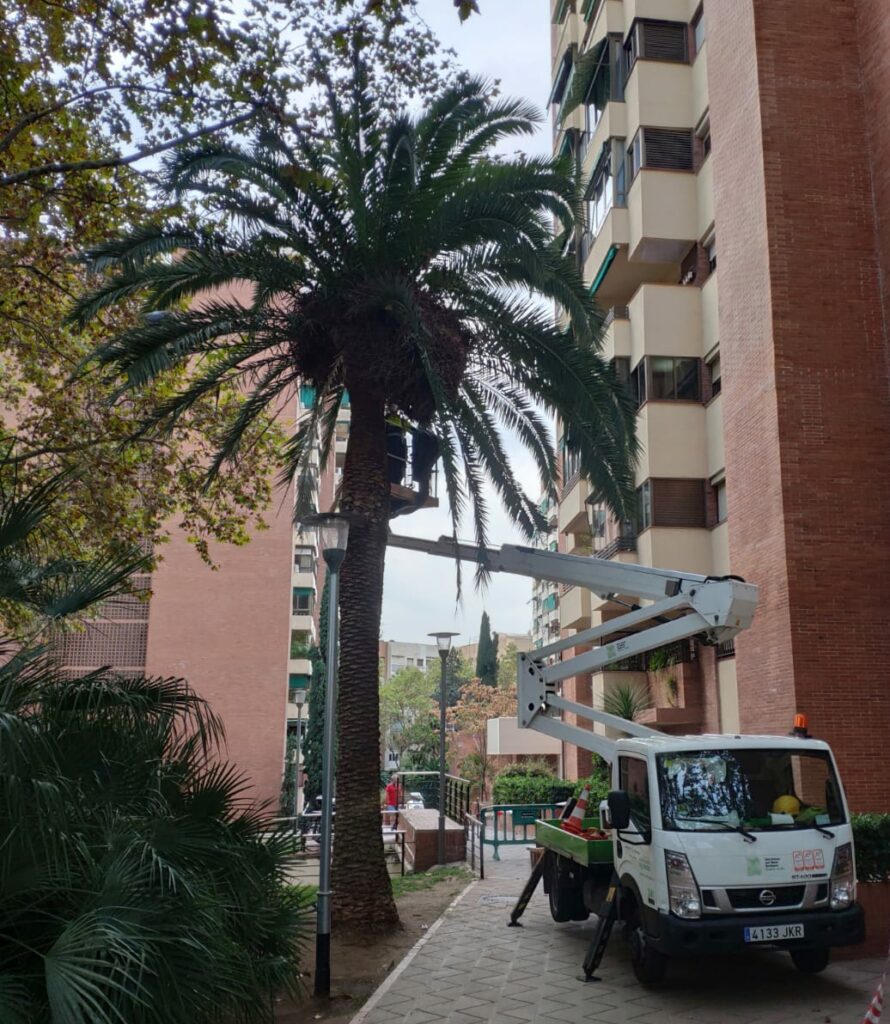
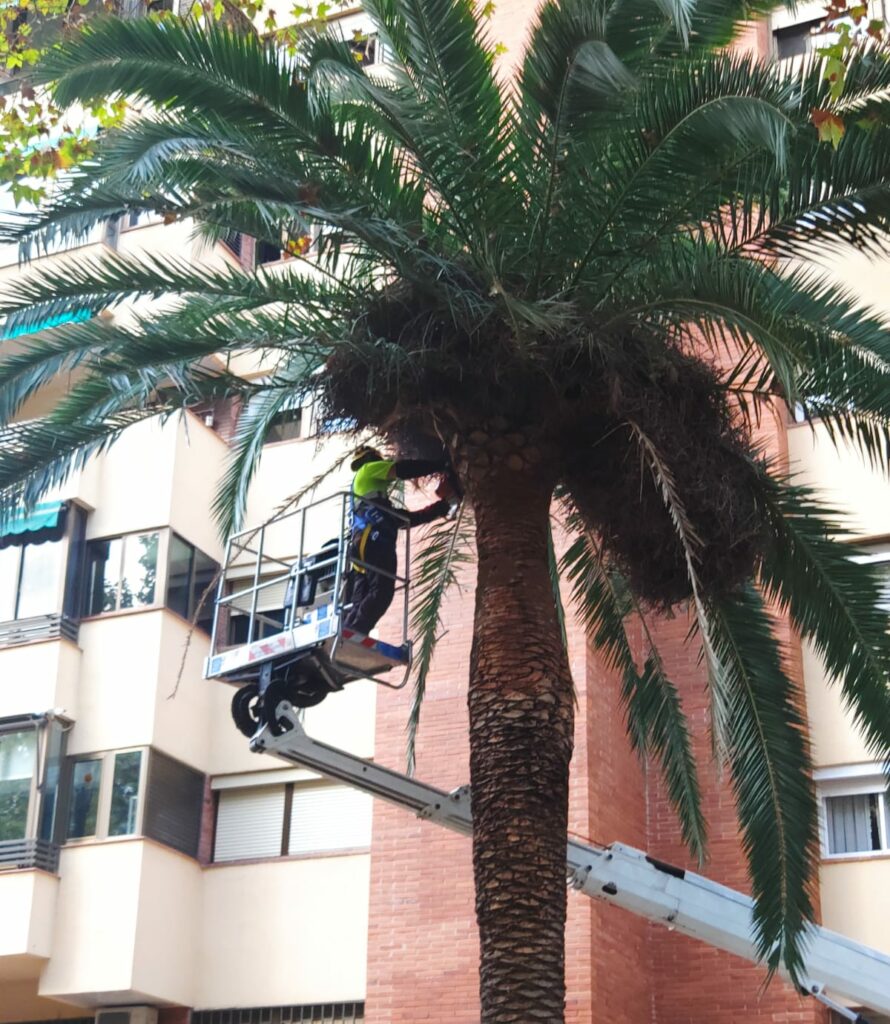
Monk parakeet (myopsitta monachus)
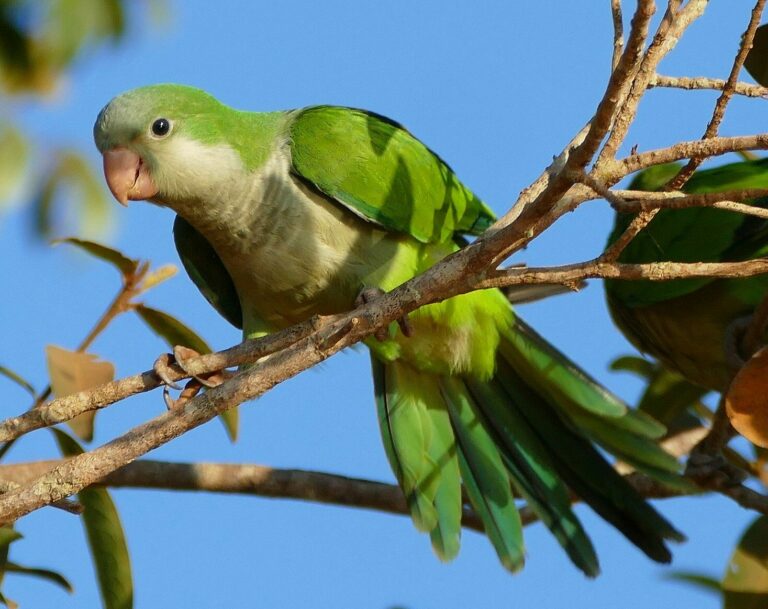
© Cornell Lab of Ornithology / Photo: Bernard Dupont
How is the relationship between the birds and the local population? Do the birds cause many problems?
Parrots are usually considered friendly animals. It is a sedentary and social species. However, when they reproduce excessively, they can become a problem for the city. Parrots build large nests in the treetops. These birds weave their nests based on small branches that are well-fixed to the base of palm trees. They have a complex construction and are made up of one or several chambers depending on the number of parrot couples there are. These nests can weigh tons and are hence a danger in large cities due to the risk of detachment, which is mitigated by the park workers who have to cut them down periodically. The nests also destroy the new shoots of all the vegetation around them. In addition, the parrots compete for food with the animals that already lived in the spaces they now occupy, like pigeons.
From a health perspective, it has been shown that psittacidae (the family of birds that includes parrots, parakeets, cockatoos, etc.) can transmit a disease called psittacosis, which causes pneumonia in humans. When there are sick animals in the environment with a very high microbial load, transmission to humans can occur. On the other hand, the workers in charge of felling the nests may be exposed to various substances that may cause allergies or even hypersensitivity pneumonitis.
Sources:
- Photo ‘Monk parakeet (Myiopsitta monachus)’ by Bernard Dupont, CC BY-SA 2.0, https://commons.wikimedia.org/w/index.php?curid=50340187
- Info box about monk parakeet: https://www.allaboutbirds.org/guide/Monk_Parakeet/overview, accessed on 27 March 2023, © Cornell Lab of Ornithology.
The park worker cohort | Protecting Barcelona’s parks and gardens from bird pests
One of the occupational cohorts studied within the EXIMIOUS project is the park and garden workers cohort. In large cities like Barcelona, the structure of bird populations is not ecologically balanced, causing certain species to proliferate out of control and become pests [1]. They are monitored and controlled by municipal services, private pest control firms, or research groups. Given the staff’s high exposure to noxious agents derived from birds and fungi, these workers form a possible risk group for the development of hypersensitivity pneumonitis (HP).
Risky business
One of these park workers’ most important functions is the surveillance and control of the bird population. This involves tasks such as felling bird nests, more specifically, parrot nests. Parrots build large nests in treetops. These nests can weigh tons and they form a danger in large cities due to the risk of detachment. For this reason, this group of workers has to cut down these nests periodically. During the felling of nests, workers may be exposed to multiple allergens and substances that can affect their health.
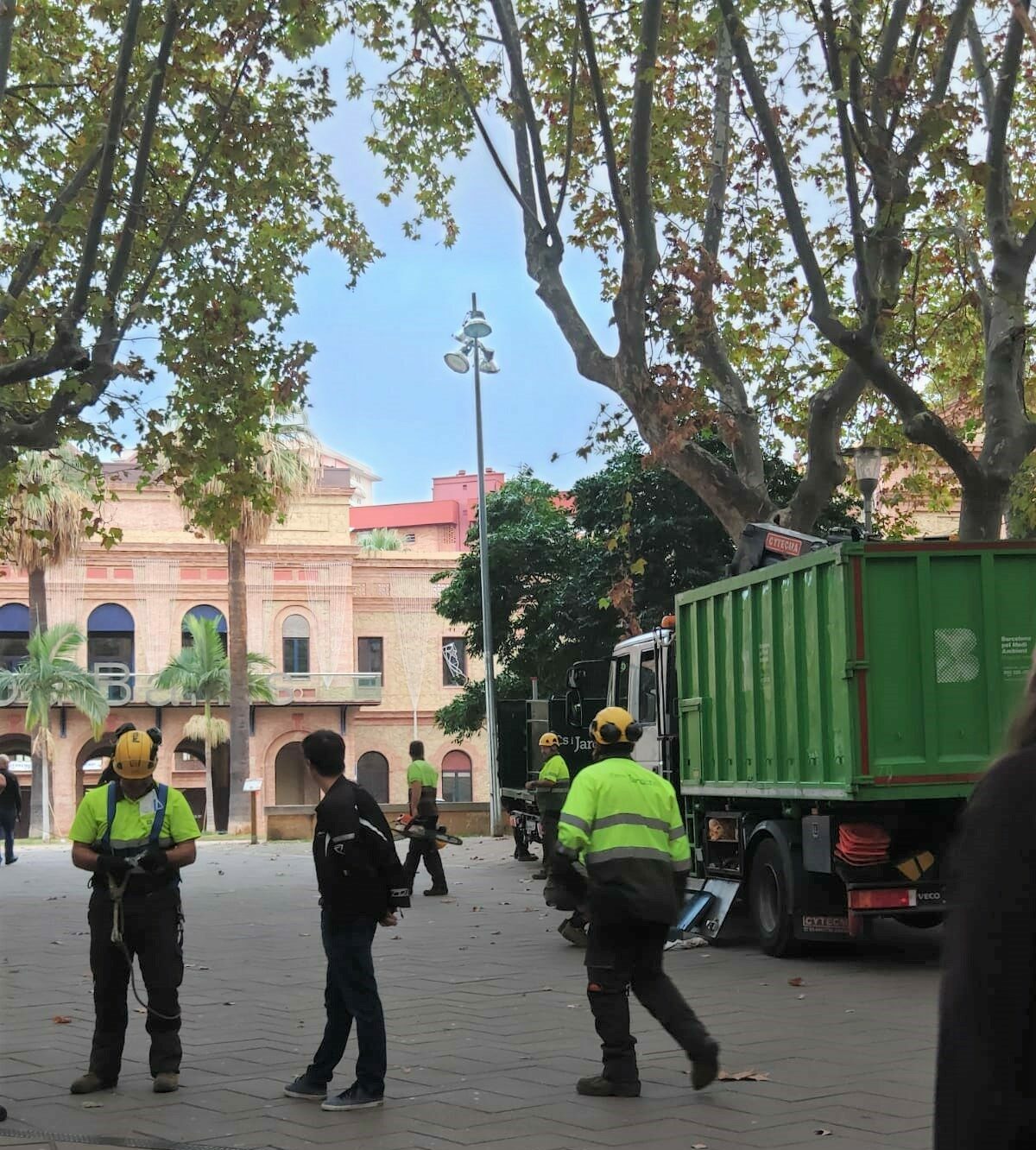
Glossary:
Hypersensitivity pneumonitis (HP): a disease characterised by an inflammation of the bronchi. To learn more about HP, read the article about the HP disease cohort on pages 7-8.
Antigen: any substance that causes the immune system to produce antibodies against it because the system does not recognise the given substance
Immune signature: a person’s unique signature showing changes in their immune system, which may reflect the person’s disease state and/or environmental exposures
Biomarker: a defined characteristic that is measured as an indicator of normal biological processes, pathogenic processes or responses to an exposure or intervention
Assessing the risk of disease
In EXIMIOUS, a cohort of park and garden workers with high exposure to antigens derived from birds and fungi is being studied by researchers at the Vall d’Hebron Research Institute (VHIR) in Barcelona. Through questionnaires and the collection of biological samples from the cohort participants, the researchers aim to determine the workers’ degree of sensitisation to these antigens and the potential risk of developing HP. In the next weeks, 100 park and garden workers of the Barcelona Public Health Agency will be recruited for the study. These individuals will undergo a medical interview regarding their professional and domestic exposure to birds and fungi. Blood and urine samples will be collected to identify specific immune signatures or biomarkers related to exposure.
The comparison of this cohort with patients diagnosed with HP due to bird or fungi exposure may serve to identify the potential risk of disease.
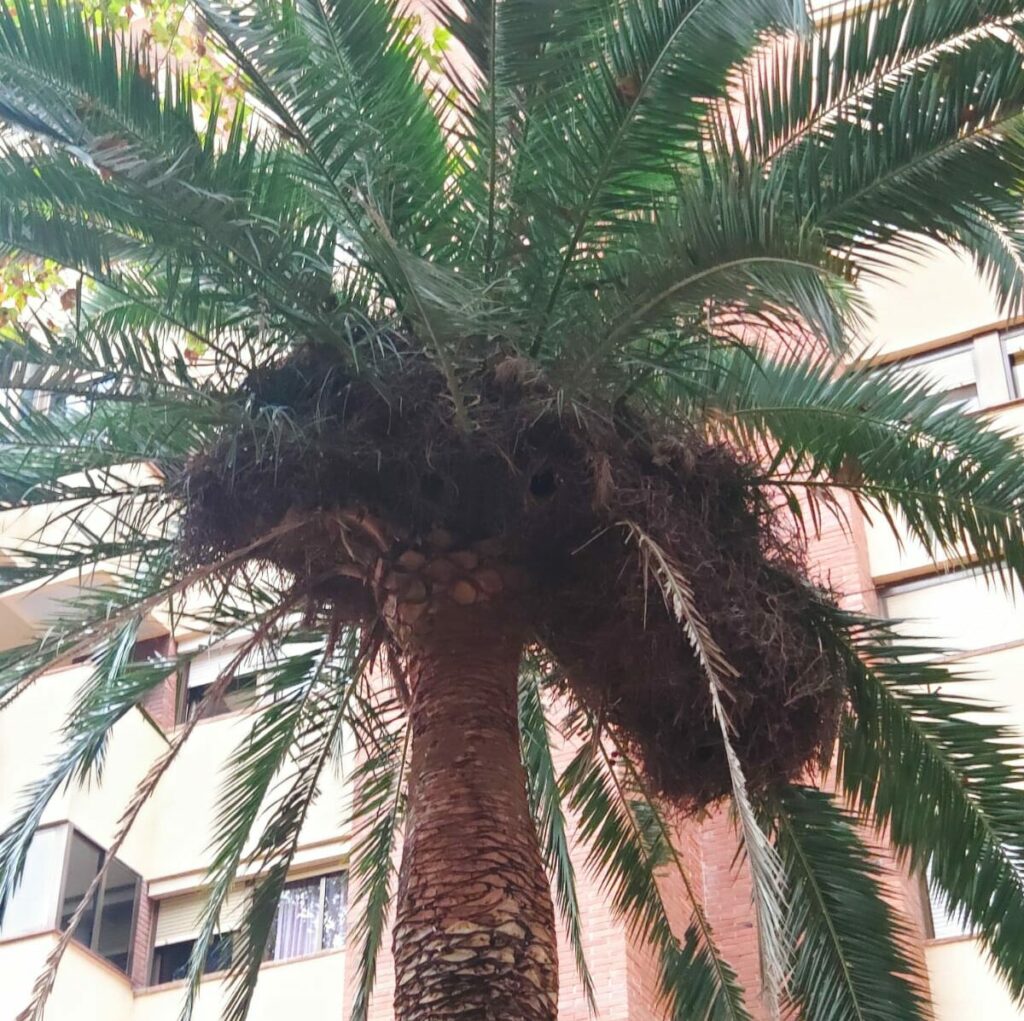
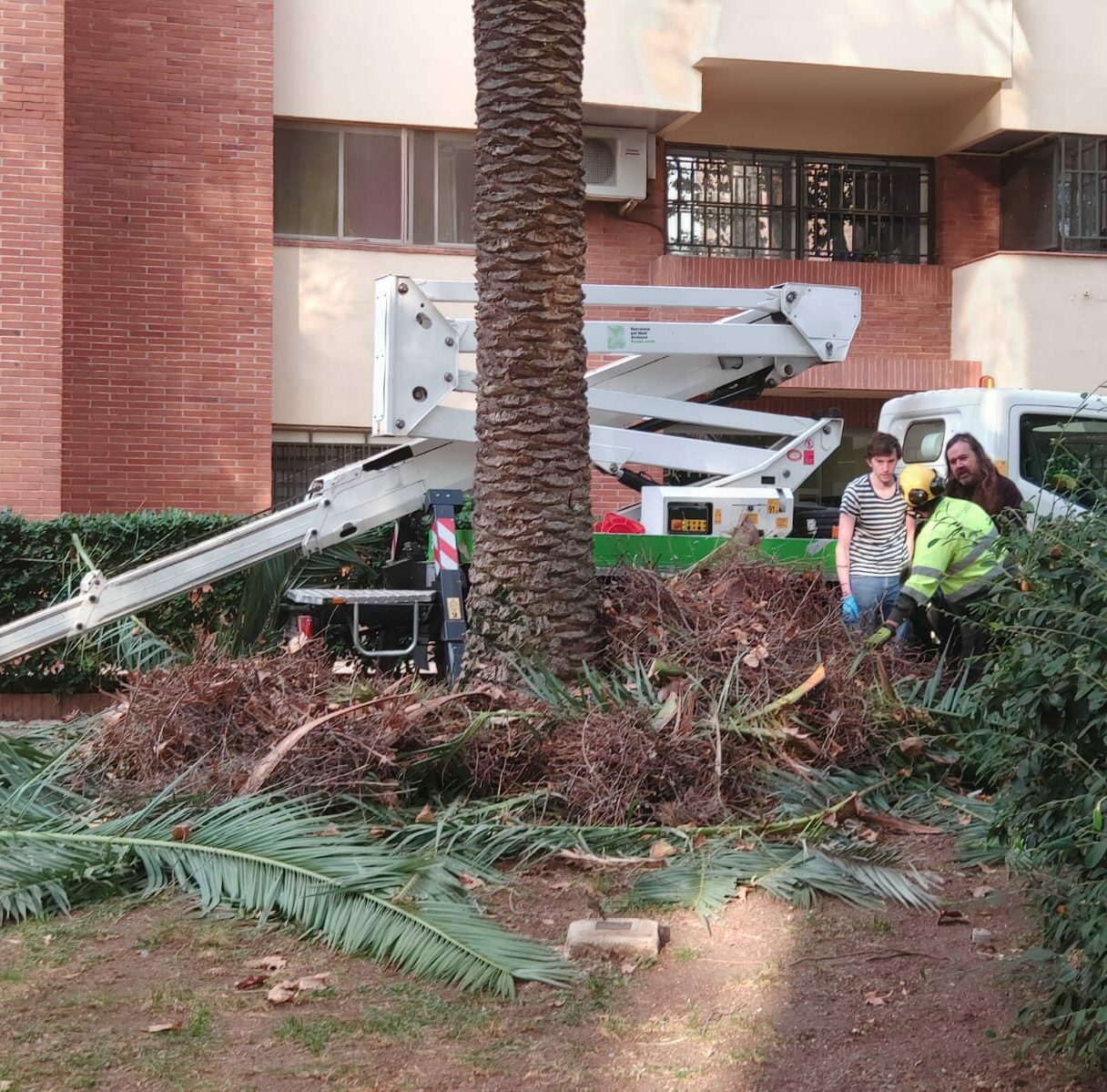
References:
- Bonnefoy X, Kampen H, Sweeney K. Public health significance of urban pests. Denmark: WHO Regional Office for Europe, 2008.
The hypersensitivity pneumonitis cohort | A disorder linked to the inhalation of bird and fungi proteins
EXIMIOUS aims to shed light on the association between environmental exposures and immune-mediated diseases. To better understand this interaction, we study exposure effects both in individuals without any disease and in individuals with a potentially exposure-related disease. The occupational cohorts, such as the park worker cohort discussed above, belong to the former group. The immunological data from these cohorts will be compared to those from the disease cohorts, consisting of people diagnosed with a specific disease. After having presented EXIMIOUS’ general population and birth cohorts (first newsletter issue) and the occupational cohorts (second and present issue), we will now start introducing the disease cohorts. The first one is closely connected to the park worker cohort: the cohort of patients with hypersensitivity pneumonitis (HP).
What is hypersensitivity pneumonitis?
Hypersensitivity pneumonitis is a disorder characterised by bronchioalveolar inflammation that, in some genetically predisposed individuals, occurs after the inhalation of a wide variety of organic and inorganic compounds. The causes of the disease are very diverse. Currently, more than 100 substances present in the environment have been identified as causing the disease, although the substances most frequently involved are proteins from birds and fungi [1]. The reported prevalence of HP is highly variable, though several studies agree that it could represent between 0.5 – 7.5% of individuals exposed during their lifetime to the substances mentioned above [2-3], thus being a first-level health problem.
Glossary:
Bronchioloalveolar inflammation: inflammation of the bronchi, the airways that carry oxygen to the lungs
Pulmonary fibrosis: a lung disease that consists of progressive scarring (fibrosis) of the lung tissues
Immunological marker: a biological indicator of changes in one’s immune system
Early detection matters
In the early stages of the disease, inflammation occurs in the lungs due to exposure to these harmful substances. This phase is normally reversible if exposure is avoided. However, if the exposure persists, an irreversible phase of pulmonary fibrosis is reached. This fibrosis is characterised by progressive scarring that causes the lung to lose flexibility. The lung’s functioning deteriorates over time, leading to increased difficulty in breathing [3-4].
Unfortunately, in patients with chronic forms of the disease, the disease can progress despite therapy efforts, with the resulting loss of lung capacity and the appearance of respiratory failure resulting from the development of pulmonary fibrosis [5]. Indeed, pulmonary fibrosis has been shown to be a predictor of mortality in these patients, with a 5-year mortality of 27% and a median survival of 12.8 years [5]. In this sense, it is of vital importance to make a correct and early diagnosis, allowing the affected person to avoid exposure to the substance that causes the disease, and to initiate the treatment with corticosteroids as early as possible.
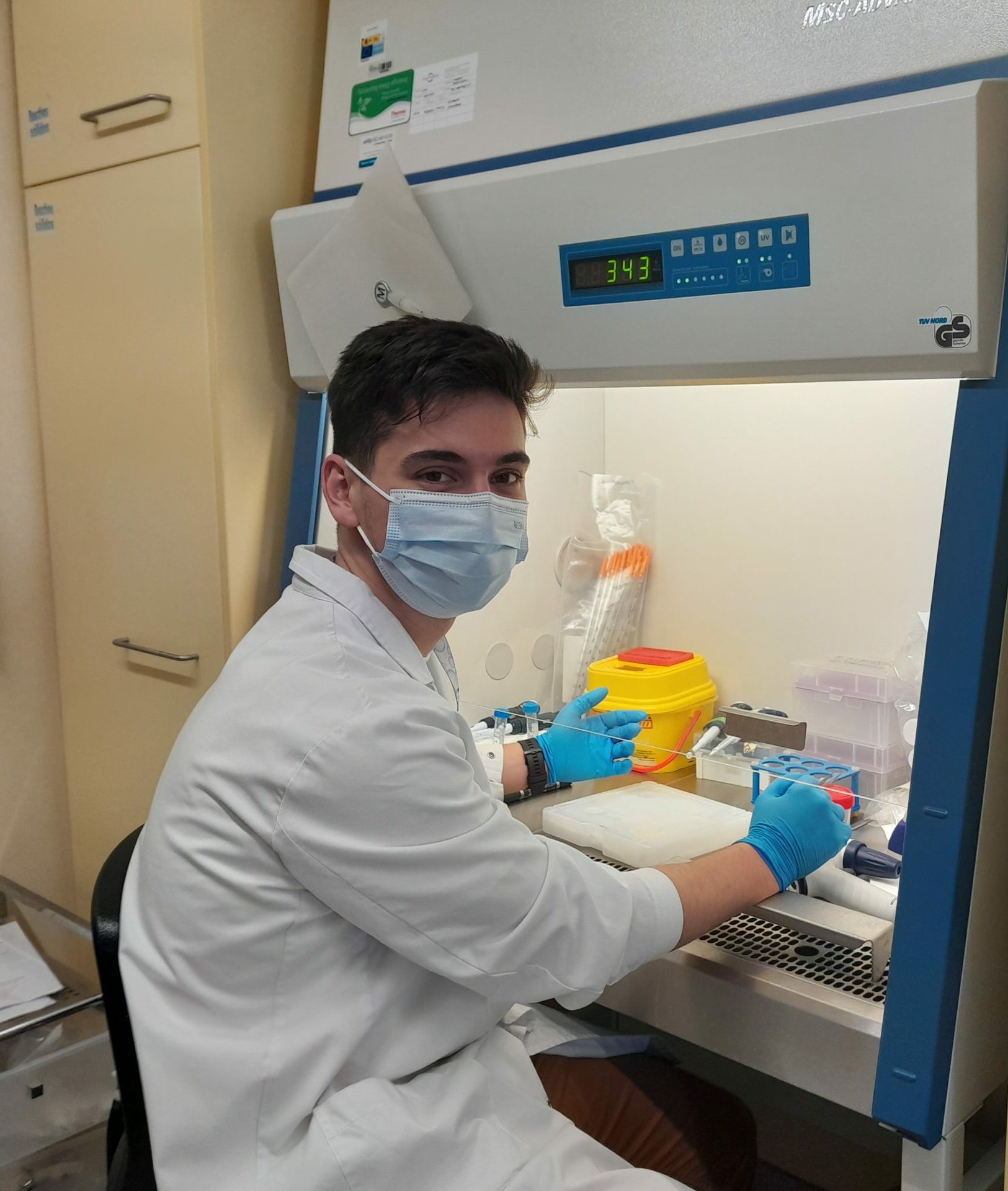
Connecting disease and exposure through the immune system
In the EXIMIOUS HP cohort study, the participants consist of 100 patients with HP caused by exposure to substances from fungi and birds. All participants have already been recruited and are treated at the Vall d’Hebron Hospital in Barcelona since it is a reference centre for the diagnosis and treatment of this pathology. Blood and urine samples have been collected from all participants by the EXIMIOUS researchers based at the Vall d’Hebron Research Institute (VHIR) in Barcelona, to identify specific immune signatures or biomarkers related to exposure-associated disease. The patients have also been interviewed by an expert in occupational and environmental medicine using a detailed questionnaire. The interviews will reveal the possible occupational and/or environmental exposures that the patients have been experiencing.
The next steps in the study include analysing various biomarkers in the biological samples obtained, which will allow us to determine whether certain immunological markers induced by exposure are predictive of the disease.
References:
- Costabel U, Miyazaki Y, Pardo A, Koschel D, Bonella F, Spagnolo P, et al. Hypersensitivity pneumonitis. Nat Rev Dis Prim. 2020 Dec 1;6(1).
- Morell F, Villar A, Montero MA, Muñoz X, Colby TV, Pipvath S, Cruz MJ, Raghu G. Chronic hypersensitivity pneumonitis in patients otherwise diagnosed as definite idiopathic pulmonary fibrosis – a prospective case-cohort study. Lancet Respiratory 2013; 1(9): 685-94.
- Vasakova M, Selman M, Morell F, Sterclova M, Molina-Molina M, Raghu G. Hypersensitivity Pneumonitis: Current Concepts of Pathogenesis and Potential Targets for Treatment. Am J Respir Crit Care Med. 2019 May 31;rccm.201903-0541PP.
- Salisbury ML, Gu T, Murray S, Gross BH, Chughtai A, Sayyouh M, et al. Hypersensitivity Pneumonitis: Radiologic Phenotypes Are Associated With Distinct Survival Time and Pulmonary Function Trajectory. Chest. 2019 Apr 1;155(4):699–711.
- Vasakova M, Morell F, Walsh S, Leslie K, Raghu G. Hypersensitivity Pneumonitis: Perspectives in Diagnosis and Management. Am J Respir Crit Care Med. 2017 Sep 15;196(6):680–9.